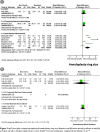Surgical mitral valve repair technique considerations based on the available evidence
- PMID: 36168574
- PMCID: PMC9473589
- DOI: 10.5606/tgkdc.dergisi.2022.23340
Surgical mitral valve repair technique considerations based on the available evidence
Abstract
Mitral valve regurgitation is the second most common valve disease in the western world. Surgery is currently the best tool for generating a long-lasting elimination of mitral valve regurgitation. However, the mitral valve apparatus is a complex anatomical and functional structure, and repair results and durability show substantial heterogeneity. This is not only due to differences in the underlying mitral valve regurgitation pathophysiology but also due to differences in repair techniques. Repair philosophies differ substantially from one surgeon to the other, and consensus for the technically best repair strategy has not been reached yet. We had previously addressed this topic by suggesting that ring sizing is "voodoo". We now review the available evidence regarding the various repair techniques described for structural and functional mitral valve regurgitation. Herein, we illustrate that for structural mitral valve regurgitation, resuspension of prolapsing valve segments or torn chordae with polytetrafluoroethylene sutures and annuloplasty can generate the most durable results paired with the best achievable hemodynamics. For functional mitral valve regurgitation, the evidence suggests that annuloplasty alone is insufficient in most cases to generate durable results, and additional subvalvular strategies are associated with improved durability and possibly improved clinical outcomes. This review addresses current strategies but also implausibilities in mitral valve repair and informs the mitral valve surgeon about the current evidence. We believe that this information may help improve outcomes in mitral valve repair as the heterogeneity of mitral valve regurgitation pathophysiology does not allow a one-size-fits-all concept.
Keywords: Degenerative mitral regurgitation; functional mitral regurgitation; mitral valve repair.
Copyright © 2022, Turkish Society of Cardiovascular Surgery.
Conflict of interest statement
Conflict of Interest: The authors declared no conflicts of interest with respect to the authorship and/or publication of this article.
Figures




References
-
- David TE, Uden DE, Strauss HD. The importance of the mitral apparatus in left ventricular function after correction of mitral regurgitation. II76-82Circulation. 1983;68 - PubMed
-
- Vahanian A, Beyersdorf F, Praz F, Milojevic M, Baldus S, Bauersachs J, et al. 2021 ESC/EACTS Guidelines for the management of valvular heart disease. Eur Heart J. 2022;43:561–632. - PubMed
-
- Dziadzko V, Dziadzko M, Medina-Inojosa JR, Benfari G, Michelena HI, Crestanello JA, et al. Causes and mechanisms of isolated mitral regurgitation in the community: Clinical context and outcome. Eur Heart J. 2019;40:2194–2202. - PubMed
-
- Coutinho GF, Antunes MJ. Current status of the treatment of degenerative mitral valve regurgitation. Rev Port Cardiol (Engl Ed) 2021;40:293–304. - PubMed
Publication types
LinkOut - more resources
Full Text Sources
